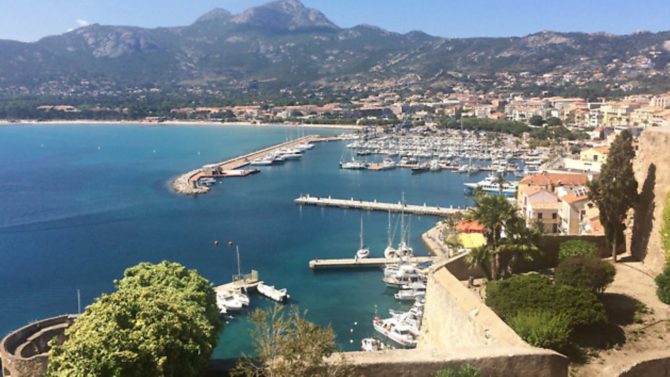10 reasons to visit Corsica this summer

The French island of Corsica is home to stunning scenery, unique traditions and delectable cuisine

The beaches
With almost 200 beaches and 1000km of coastline, Corsica is a beach lover’s dream. It has a mixture of white sandy bays and pebbly coves, widely considered some of the cleanest and most beautiful in France. All offer excellent swimming, and for the more adventurous there are plenty of watersporting opportunities including sailing, windsurfing and sea kayaking. Some of Corsica’s best beaches include the 5km stretch at Calvi; those in the Valinco Gulf near Propriano; and most along the southern strip of coast between Porto-Vecchio and Bonifacio.

For an in-depth guide to beaches in southern Corsica, click here.

The food
Corsica’s cuisine is often described as a blend of French and Italian, but with its own unique flavours and ingredients. Fresh fish and seafood are abundant but traditionally Corsicans are meat-eaters, so expect to see wild boar, lamb, veal and charcuterie on menus everywhere. Much of the mountain cooking is based around the locally produced dairy products such as brocciu (a ewe’s milk cheese), and chestnuts form a staple ingredient in many dishes. Traditional Corsican desserts are milk- or egg-based; try the fiadone, a cheesecake flavoured with lemon.

The wine

Corsica also produces several very good wines and liqueurs, little known outside the island. One of the most important grapes is Nielluccio, a variety thought to be a close cousin of Tuscany’s Sangiovese. The principal white variety is Vermentino, and Sciacarello is a red unique to the island. Rosé is also very popular, as is the liqueur de myrte, made from the myrtle plant which grows wild in the scrubland. Visit a vineyard for a degustation; Domaine Orsini near Calenzana is one of the best.

The scent
Corsica is often dubbed ‘the fragrant isle’ due to the dense expanses of maquis (scrubland) that cover it. This is made up of various distinct plants: the best-loved is immortelle, said to have anti-ageing properties, accompanied by juniper, myrtle, fennel, thyme, rosemary and French lavender, and their scent is carried across the island and all the way out to sea. Many of Corsica’s beaches are also sheltered by delicious-smelling pine forests.

The traditions
Age-old arts and crafts abound in Corsica – in particular knife-making, jewellery-making and pottery – and you can watch artisans at work in many villages in the Balagne region. Corsica has a unique musical tradition of polyphonic choral singing, the rebirth of which was linked to the rise of Corsican nationalism in the 1970s, and concerts are widely given. The group Meridianu are one of the most popular. Corsica also has its own thriving cosmetics industry produced from the island’s native plants. Products such as essential oil can be bought in the Corsica Beauty boutique in Calvi.
The mountains
Corsica’s scenery is breathtaking. Its chain of mountains runs down the length of the island and provides fantastic opportunities for hiking, canyoning and off-road 4×4 tours. You can also horse-ride along marked trails, and hire an electric bike from any of the main towns if your legs don’t fancy the hard work. Consider booking a guided 4×4 excursion with Natura Corsa and opt for one that includes a picnic – you’ll feast on traditional Corsican fare in the stunning natural environment and enjoy elevated views of the coast.
The hilltop villages
Mainland France is already loved for its precariously-perched villages and Corsica has its fair share. Most are situated in the north-western Balagne region – honey-hued Pigna is known for its art and craft, Sant’Antonino is the oldest inhabited village in Corsica, and other beauties include Cateri, Avapessa and Montegrosso. Narrow cobbled streets wind around pretty churches and the villages cling to mountains towering above the sea, offering a glimpse of Corsica’s old way of life as well as spectacular views.
The climate
Corsica enjoys a typical Mediterranean climate and superb summer temperatures, with one of the highest sunshine records in France – an average of 2,793 hours per year. Average temperatures of 27 degrees in July and August await those looking to enjoy the island’s beaches. In September and October the weather in Corsica is still warm and sunny, with temperatures rarely dipping below the mid- to low-20s – and this is a great time to visit to avoid the summer holiday crowds.
The coastal resorts
Southern Corsica is home to glamorous Porto-Vecchio, the island’s oldest established resort where gleaming yachts line the smart marina and well-heeled visitors populate waterside cafés and bars. Nearby Bonifacio also draws an international yachting crowd. Calvi, in the north-west, is photogenic and sophisticated, hosts two popular summer music festivals against the dramatic backdrop of its citadel. Smaller St-Florent is best reached via a winding drive through the Desert des Agriates, lying on sparkling bay and stylistically similar to St-Tropez, although more intimate.
The history
Corsica has had a turbulent but fascinating history and Corsicans are fiercely proud of their heritage. The island has changed hands between nations multiple times, influenced by its strategic position in the Mediterranean. Corsica was declared independent from France in 1790 by patriot Pascal Paoli, but this was short-lived and Napoléon (who was born in the capital Ajaccio) then moved in his army. Corsica has been a department of France ever since. Napoléon’s family home, Bonaparte House, is now a national museum.
Read more:
Corsica region guideHolidays in FranceThe secret beaches of the south of France
Share to: Facebook Twitter LinkedIn Email
More in Corsica


